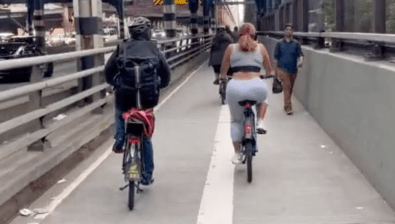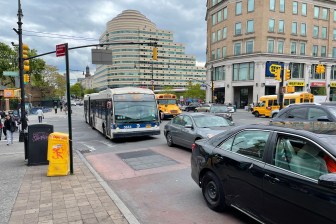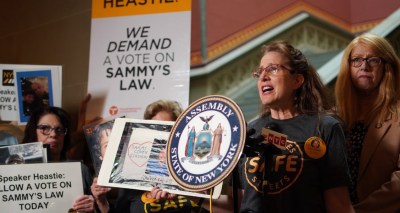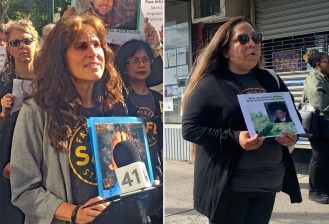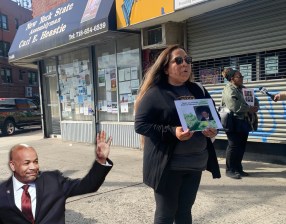Funding Assumptions in MTA Capital Program Already Look Like Fantasies

The MTA capital budget is risky enough as advertised: It requires putting $7 billion of repairs and system expansions on transit riders’ credit card. But the total tab may end up being much bigger, because in addition to billions in borrowing, the funding plan relies on a series of highly optimistic assumptions. Just one week after the budget was released, those assumptions look increasingly shaky.
“The MTA’s financial plan announced today is like a high wire act with a shaky safety net,” said Denise Richardson, the managing director of the General Contractors Association of New York and a former MTA official herself. “The plan relies on increased levels of debt and a pyramid of assumptions, each one of which is critical to holding the program together.” Richardson blasted the federal, state, and city governments for not adequately funding the transit system.
The Tri-State Transportation Campaign laid out seven of the potentially faulty premises underlying the MTA’s capital budget in an important post last week. Now, two of them already appear to be foundering.
First, the MTA expects New York City to contribute an extra $250 million based on the promise of future tax revenues generated by the opening of the Second Avenue Subway. When asked about that idea on his weekly radio show, Mayor Bloomberg seemed to dismiss the idea. “Let me check,” said Bloomberg. “I’ll call our finance director and see if taxes came in yesterday.”
The mayor’s radio comments accurately reflect the city’s position, spokesperson Marc LaVorgna told Streetsblog yesterday. “That’s a small piece of their plan, a very small piece,” he said, stating that the city was still looking at the individual pieces of the MTA budget but reiterating that the city’s budget, too, was marked by tough cuts.
LaVorgna also praised the MTA for putting together a relatively good capital budget given the circumstances. “They’re not given the resources they need by the state,” he said.
In a sign of how far this revenue stream is from becoming real, MTA spokesperson Kevin Ortiz said that no details were yet available on how the deal would be structured. The Second Avenue Subway doesn’t open until 2016, but the current capital budget runs only through 2014. For this revenue to be structured as value capture — tapping funds from the expected increase in nearby property values, for instance — rather than as a simple increase in the city’s contribution to the MTA, some sort of mechanism for monetizing that future value now would need to be put into place.
Also questionable are the MTA’s expectations of federal assistance. The transit agency already revised its estimates of federal aid downward by $1 billion. That was based on the lack of a new federal reauthorization bill, according to Ortiz.
But even the new estimate might be too rosy. It assumes that when a new transportation bill eventually passes, it will maintain current funding levels. That’s the plan in the Senate, but the House transportation bill would cut funding levels by about a third. If the House has its way, or even if a compromise is made somewhere in the middle, the MTA will see far fewer federal funds.
The just passed debt deal will also likely affect the MTA’s federal revenues, another variable that Ortiz said had not been accounted for in the MTA capital plan. By putting caps on discretionary spending, the deal threatens transportation programs that aren’t funded with the gas tax. The New Starts program, which has funded projects from East Side Access to the planned Nostrand Avenue Select Bus Service line, is just one program that could be affected.
It is possible that the city will decide to increase its contribution to the MTA, whether through value capture or otherwise, and it is possible that the threats to federal transportation spending won’t materialize. But would you bet on it? With Governor Cuomo showing no interest in fulfilling the state’s obligation to pay for the last three years of the capital program, that’s exactly what the MTA is being forced to do.
